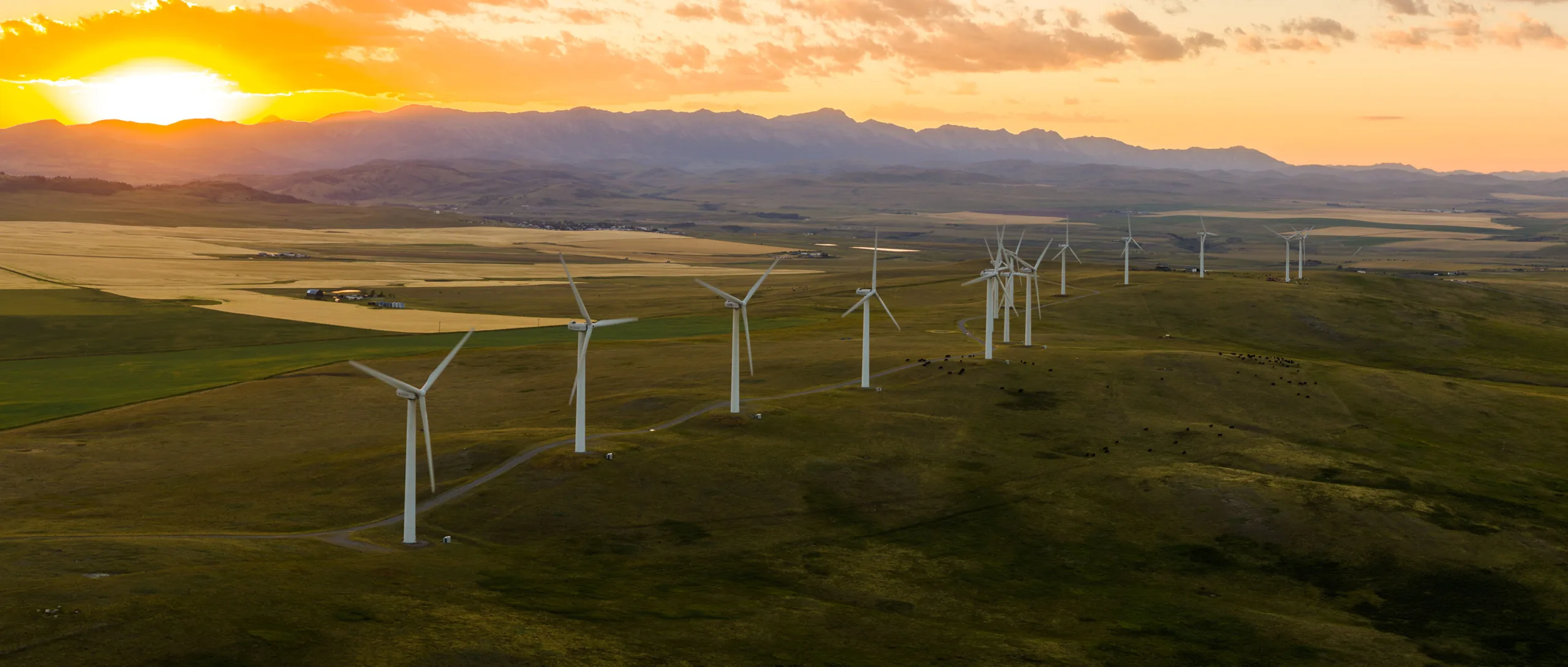
Top Location for Renewable Investment
Alberta is committed to sustainable growth and welcomes companies that prioritize environmental, social, governance (ESG) goals.
As Canada’s leading jurisdiction for renewable investment, with more than $2 billion invested since July 2019, Alberta is an ideal location for companies looking to reduce their carbon footprint. Calgary is ranked as one of the world’s top 15 cleantech ecosystems, and Alberta’s major oil and gas companies are investing heavily in cleantech, with most committing to net-zero by 2050. Alberta established the Environmental Social Governance Secretariat in May 2021, the very first of its kind in any province, and created a Jurisdictional ESG Framework to inform policy and highlight potential opportunities for investment.
Cattle grazing in a field with windmills at sunset in Oldman Dam Provincial Recreation Area near Pincher Creek.
© Travel Alberta Photo by Neil Zeller
Alberta Stories
ESG
Capital Markets and ESG: The Alberta Advantage
Alberta is working hard to drive impact and create positive change to a sustainable, low carbon global economy. With leading industry expertise and innovation across the project supply chain, from project management to financing and a diverse workforce to address today’s challenges, investments into Alberta’s energy sector will support the global low carbon transformation.
Renewable Energy
Alberta is Canada’s leading jurisdiction for renewable investment. Rystad predicts over 80% of renewable investment will take place in Alberta over the next five years. Investors are already making Alberta their renewable energy home. Over $2B has been invested since July 2019.
Carbon Capture, Utilization and Storage
Alberta’s technical expertise, carbon capture, utilization and storage (CCUS) success and geology provide an ideal setting for the development of carbon capture, purification and development opportunities for carbon storage in Alberta.
Hydrogen
Alberta is home to 70% of the marketable natural gas in Canada. Alongside leading technical expertise and innovative decarbonization technologies like CCUS, the province offers an opportunity to supply low carbon fuels like hydrogen to markets internationally.
Oil and Gas including methane abatement
As one of the world’s largest oil and gas producers, investments into lower carbon fuels and lower carbon energy options can be found here in Alberta. Did you know ninety per cent of major oil producers in Canada – largely in Alberta – have committed to net-zero by 2050?
Cleantech innovation for global decarbonization
Canada’s oil and gas industry, led by Alberta, is the largest contributor to cleantech spending in Canada at 75% of the approximately $1.4 billion spent annually. The entrepreneurial spirit in Alberta makes it a global hub for cleantech investment and Calgary is ranked as one of the world’s top 15 cleantech ecosystems.
Sources
Sources
Context
Canadian LNG few emissionsGlobe Newswire
90% committed to net-zero by 2050The Transition Accelerator
Hydrogen Transition AcceleratorEnvironment & Climate Action
ContactSources
Sources
Calgary Herald
Investments since 2019Journal Of Commerce
Explore advanced nuclear technologyGlobal Covenant of Mayors
Global covenant of mayorsCanada Action
YouTube
Cleantech InvestingSocial Transformation
ContactSources
Sources
Newswire
TransAlta certified by DiversioGovernance Stewardship
ContactSources

Connect with us
Have an ESG success story you want to share? Want to learn more? Have an investment inquiry? We want to hear from you.
Windfarm in southern Alberta, Canada
Photo by David Thielen on Unsplash